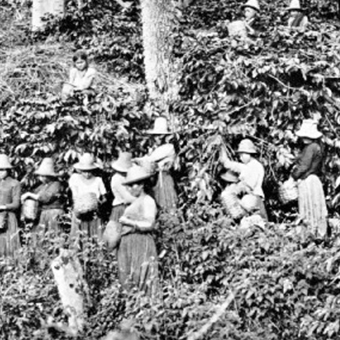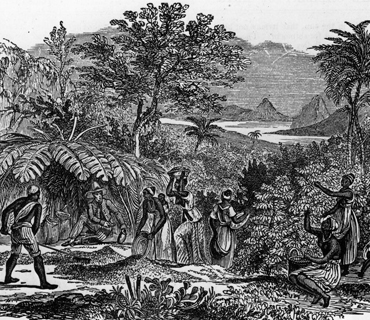Coffee is a complex beverage with a rich history. The coffee plant originated in Ethiopia; a country located in the Horn of Africa. According to the story, a goat herder named Kaldi noticed that his goats became more energetic and restless after eating the berries from a certain tree. Curious, Kaldi tried the berries himself and experienced a similar effect. It is also believed that Kaldi
took his findings to the abbot of the local monastery, who made a drink with the berries and amazed people with how this fruit helped keep them energetic and awake for hours. What Kaldi discovered was a coffee plant, which eventually led to the cultivation and spread of coffee throughout the world. This legend does not appear before 1671.

Divided image have waters appear it tree may sixth
open great heaven years
There are several unverified stories that describe the origin of coffee. These
subjective and circumstantial accounts may vary in detail, but they all share
the common theme of coffee’s discovery by curious individuals who noticed the
effects of the coffee plant’s beans. The Kaldi story is believed to have
originated in the 9th century, while the Sheik Omar legend has it that after
being banished from Mocha and left to starve, Omar stumbled upon some unknown
berries. After unsuccessfully attempting to chew and roast them, he decided to
boil them instead, resulting in a liquid that not only revitalized him but also
provided sustenance.



Exploring the World of Coffee

Coffee drinking and knowledge of the coffee tree first appeared in Yemen in the
15th century. It is believed that coffee seeds were roasted and brewed similarly
to today to help Sufi circles stay awake for religious rituals. There are
differing accounts of the origin of coffee, with some suggesting it came from Ethiopia and was introduced to Yemen through trade, while others credit individuals like Muhammad Ibn Sa’d or Ali ben Omar for bringing it to Arabia. Ali ben Omar may have first encountered coffee in 1401 while staying with the Adal king Sadadin’s companions. Coffee may have also been developed from a tree in Somaliland. Somali merchants from Berbera and Zeila first exported coffee from Ethiopia to Yemen. Mocha used to import two-thirds of its coffee from Berbera-based merchants before British-controlled Aden captured the coffee trade in the 19th century. By 1600, coffee had made its way to Italy and eventually spread to the rest of Europe, Indonesia, and then America. After returning from a ten-year trip to the Near East in 1583, German physician Leonhard Rauwolf described coffee as a black beverage that was believed to be helpful in treating stomach ailments. He noted that it was consumed in the morning from a porcelain cup that was passed around and made from the fruit of a bush called “bunnu.”
The trade between Venice and North Africa, Egypt, and the Ottoman Empire brought
coffee to Venice, which then introduced it to the rest of Europe. Coffee gained
wider acceptance after Pope Clement VIII declared it a Christian beverage in
1600. The first European coffee house opened in Vienna in 1647.
Coffee has come a long way from its early discovery in Ethiopia, spreading across
the world and becoming a popular beverage enjoyed by many. Today, coffee is not
only a drink for getting through the day but also a part of social gatherings, a
symbol of romance, and a source of inspiration for many. With new variations and
inventions, coffee continues to evolve and captivate coffee lovers around the
world.

